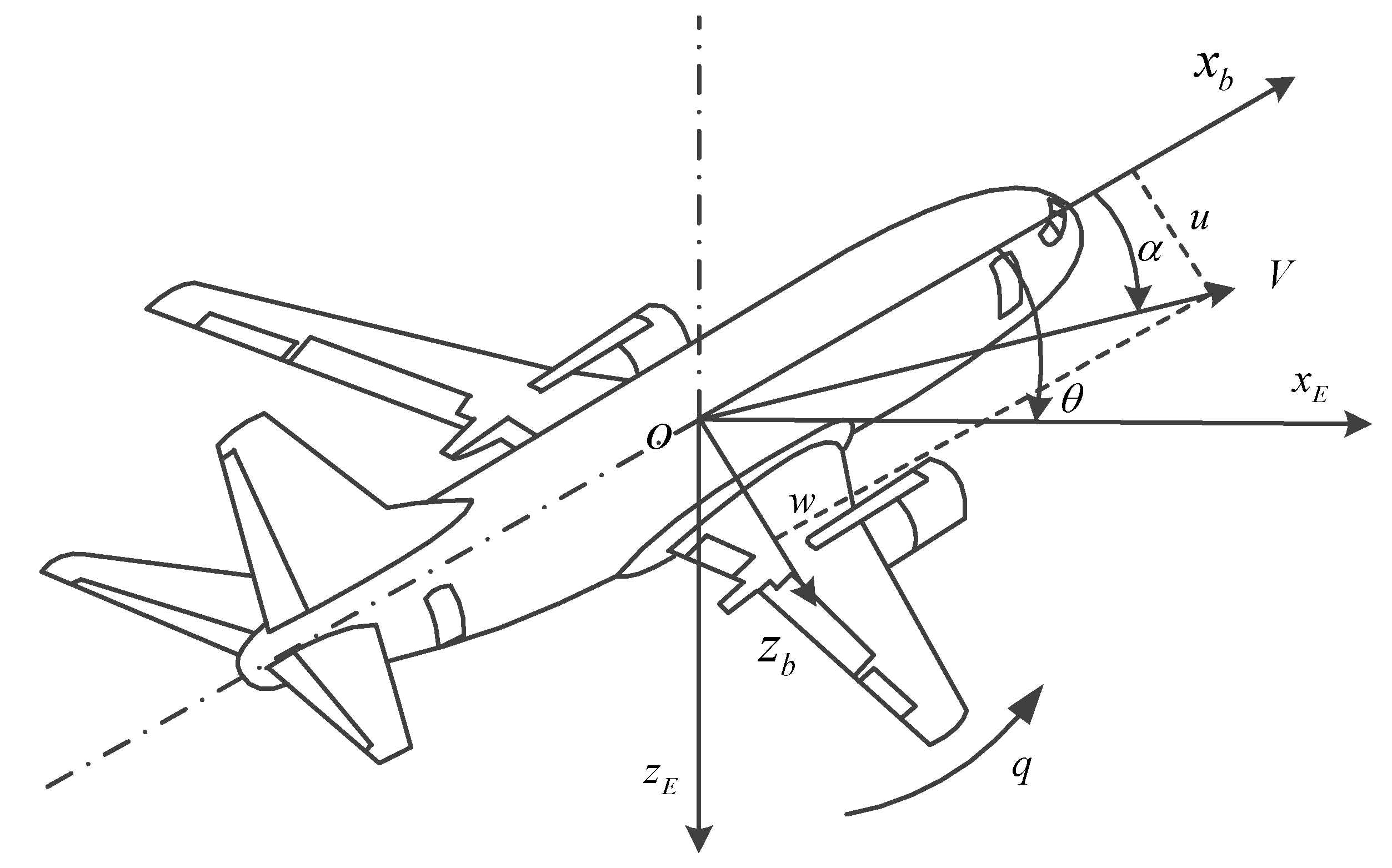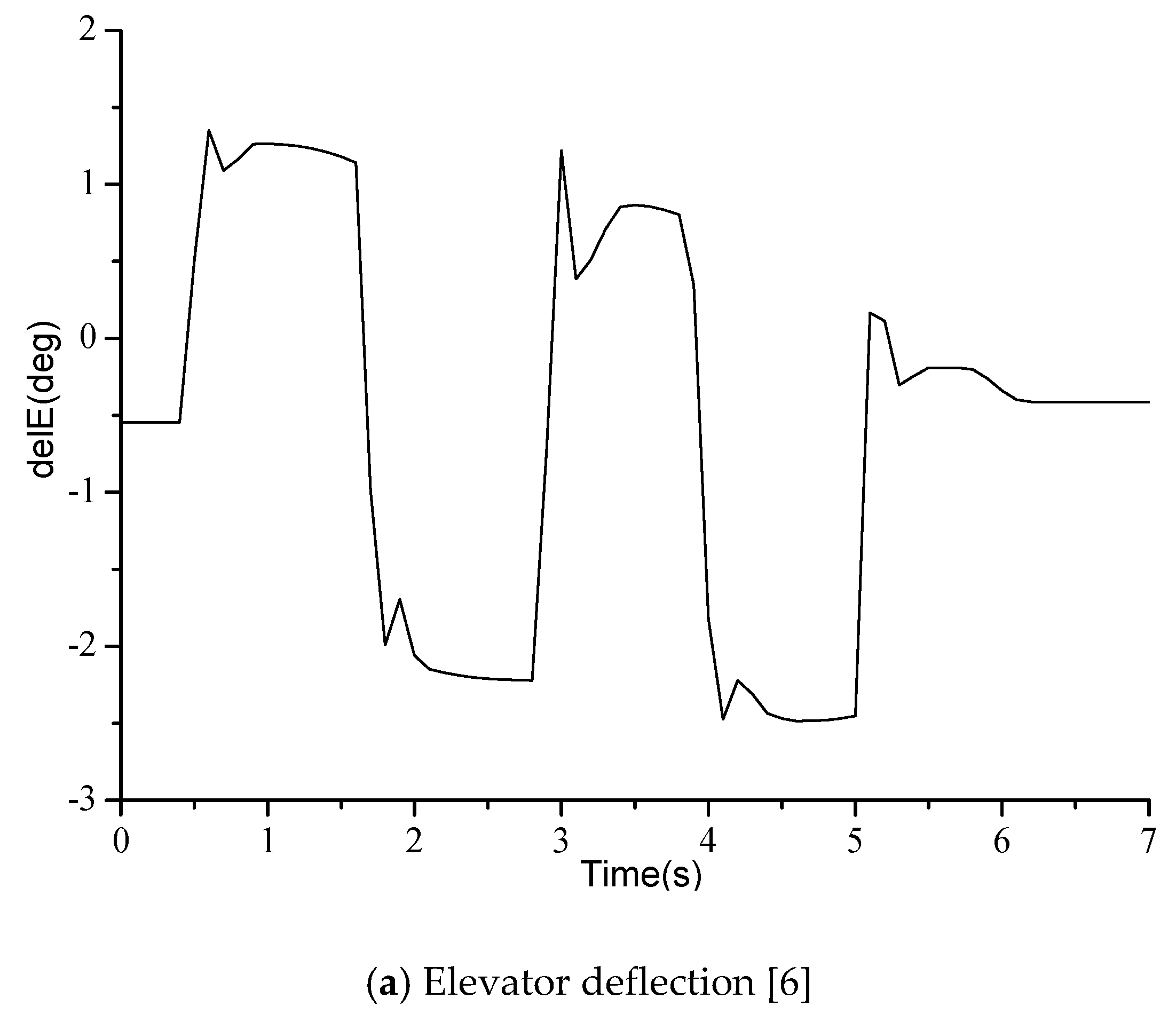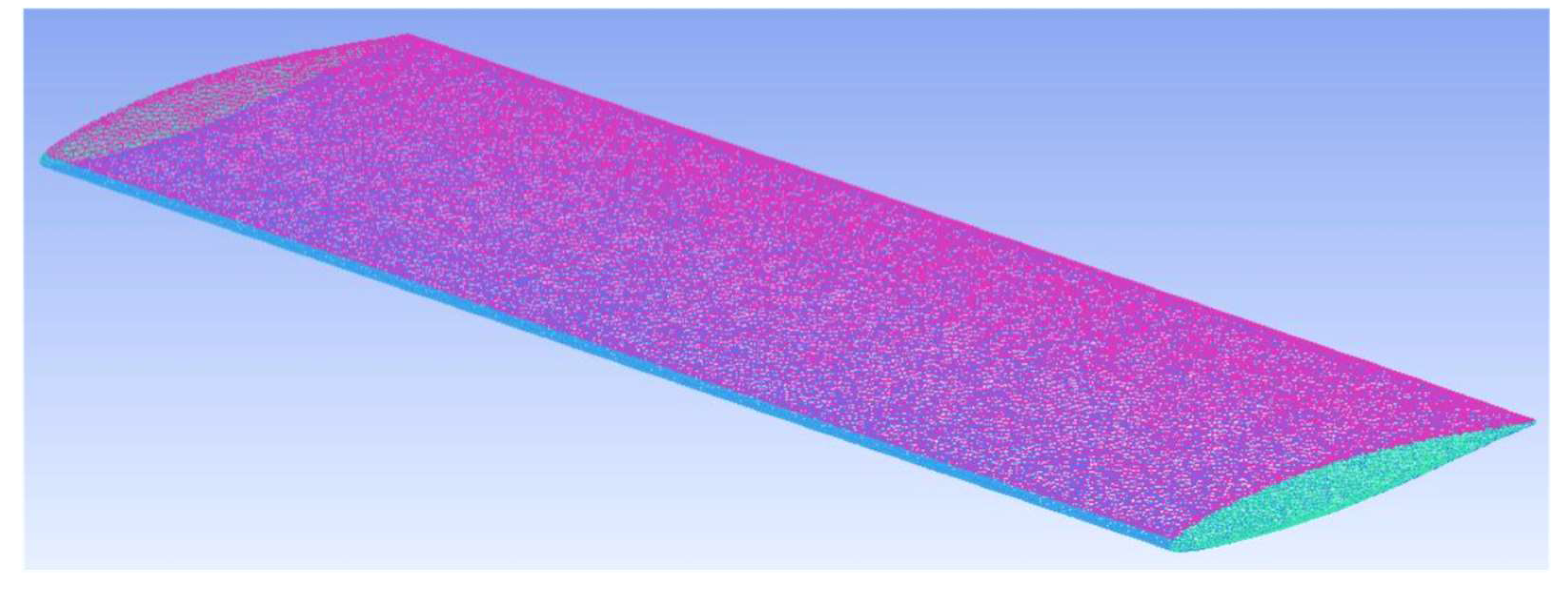1. Introduction
Aircraft icing is the phenomena of ice accretion on the aircraft. Aircraft icing will change the air flow around the lift surface, thus reducing the performance and control ability of the aircraft. Severe icing will cause air separation on the airfoil ahead of time, resulting in a stall [
1], which poses a threat to the safety of flight characteristics. In order to prevent the serious consequences of icing, an anti-icing system is usually installed on the important lifting components of modern aircraft. However, flights with ice accretion on the aircraft are still unavoidable, and the accidents are usually caused by the failure or improper operation of ice protection systems. According to the data given by National Transportation Safety Board (NTSB) [
2], from 1981 to 1988, about 542 aircraft accidents are caused by aircraft icing. According to the statistics of the International Civil Aviation Organization (ICAO), the death rate of passengers in aircraft icing accidents reached 39% in the early 1990s [
3]. Aircraft icing is still a big problem for flight safety and the studies on this area are attracting more attention.
In order to define the effects of ice accretion on aircraft, the methods of parameter identification were used to extract the aerodynamic parameters from flight test data. Ranaudo et al. [
4] compared the stability and control derivatives between clean and naturally iced aircraft, using a modified maximum likelihood estimation method with flight test data of Twin Otter. Ratvasky and Ranaudo [
5] studied the effects of ice accretion on Twin Otter stability and control derivatives with flight test data of clean and artificially iced aircraft, and a modified stepwise regression algorithm was used to obtain pitching and yawing derivatives. Whalen [
6], based on the flight test data of Twin Otter, studied the changes of stability and control derivatives of naturally iced aircraft from clean aircraft with a MATLAB toolbox called System Identification Programs for Aircraft (SIDPAC) [
7], and an analysis was given about the differences of aerodynamic parameters with different icing locations on aircraft. Melody et al. [
8] compared the results of different parameter identification techniques: a batch least-squares algorithm, an extended Kalman filter, and an
algorithm, and found that only the
method provides a timely and accurate icing indication.
Flight test data and identification results of icing could be used as a basis component of the forecast of aircraft icing. Based on the flight test data of the Twin Otter aircraft [
4,
5,
9], Bragg [
10] proposed a simple model to relate ice accretion effects with icing and flight parameters, which could be used on the Twin Otter aircraft to sense the effect of ice accretion on the aircraft performance and control during quasi-steady-state flight. Lampton [
11] developed a methodology and simulation tool for evaluation of aircraft dynamical response, stability and control characteristics due to icing. The component build-up method was used to implement icing effects. Based on the flight test data from the Tailplane Icing Program (TIP) [
12] conducted by National Aeronautics and Space Administration (NASA) and Federal Aviation Administration (FAA), Hiltner et al. [
13] developed an analytical tool called TAILSIM to model the effects of tailplane icing on the flight dynamics of the Twin Otter aircraft and a comparison has been made between the responses of the TAILSIM program and the flight test data. Di Donato et al. [
14] studied the viability of ice accretion detection using measurements of a single output from airplane longitudinal dynamics, and a parameter estimation method is used to detect the changes due to ice accretion. Ratvasky et al. [
15], in 2008, reviewed the methods available to model and simulate icing effects on performance, stability and control, including the wind tunnel testing of sub-scale complete aircraft models, which showed that modeling and simulating methods could help to forecast the effects of aircraft icing. Deiler [
16] presented a new Δ model approach to model the icing-related degradation of aircraft aerodynamics, which described changes of the longitudinal and lateral aircraft aerodynamics accurately.
In this paper, a two-part method for predicting longitudinal aerodynamic derivatives of iced aircraft is proposed. Firstly, a nonlinear modeling of longitudinal flight dynamics is carried out. Then, for the aircraft with flight test, a parameter identification system based on maximum likelihood criterion is established. Furthermore, according to the NASA flight test data [
17,
18], the longitudinal aerodynamic parameters of both clean and artificially iced aircraft are obtained by the maximum likelihood identification method. Finally, for the aircraft without flight test, an engineering prediction method of aerodynamic derivatives based on individual component CFD calculation and narrow strip theory is established. The longitudinal aerodynamic derivatives are calculated by the prediction method, and the correctness of the prediction method is verified by comparing the calculated results with the identified results.
The contribution of this paper is the establishment of a reasonable and accurate method for calculating the effects of icing on aircraft longitudinal aerodynamic parameters. Based on the ice shapes of wing and horizontal tail, this approach can easily calculate the difference between clean and iced aircrafts. The utility of this approach is the ability to evaluate the effects of different ice shapes accreted on the wing or horizontal tail of the aircraft, especially for those where icing data do not exist. Usually, the complete CFD method needs to calculate the ice shape according to the meteorological conditions, then grid the aircraft model and, finally, carry out the flow numerical simulation. The method in this paper only needs to calculate the aerodynamic derivatives of individual aircraft component. Compared with the complete CFD method, this method reduces a lot of calculation and can provide fast estimation results for engineering.
3. Identification Method Accuracy Verification
In order to verify the accuracy of the identification method, the following steps are taken.
- (1)
Choose a set of aerodynamic parameters as the reference value under a flight condition within a reasonable range.
- (2)
Take as the parameters of an aircraft dynamic model to obtain the response of this reference dynamic model under certain elevator inputs. Then, regard the response data as the flight test reference response for identification using in the next step.
- (3)
Add a proactive change to , and turned into , which is regarded as the initial value. Start this identification process from the initial value using the response data obtained in step 2. The input value is calculated iteratively until the input value response is basically consistent with the reference response. Then, the result can be achieved.
- (4)
By comparing the difference between the identification result and the reference value, the correctness and accuracy of the identification system are verified.
Aircraft DHC-6 Twin Otter [
18], a high-wing, twin-engine, commuter-class aircraft, is chosen as the test plane. The initial flight conditions are shown in
Table 1.
The result of aerodynamic parameters is shown in
Table 2, and the output responses fitting curve is shown in
Figure 3, respectively.
As shown in
Table 2, the results compared extremely well and most of the errors between identification results and reference values are less than 6%. The errors of
and
are larger than others, 12.50% and 11.17%, respectively. However, the change tendency is reasonable.
It could be observed from
Figure 3 that the initial responses of angle of attack and pitch rate have some discrepancies as compared with the reference response curve. However, when the system parameters are alternated with the identification result
, the resulting response curves are almost coincident with the reference curves.
According to the verification results, the error of the identification method is within the acceptable range. This method is relatively effective and accurate, and can be used to identify the aircraft longitudinal aerodynamic parameters.
5. Prediction Method Application and Result Analysis
The aerodynamic parameters of the wing and horizontal tail:
,
,
are calculated under both clean and iced conditions with the ice shapes of the wings and horizontal tail chosen from [
17] by the individual component CFD method. As an illustration,
Figure 9 shows the grid for CFD calculation of the horizontal tail. The calculation conditions are based on the icing flight test conditions: flight speed
= 55 m/s, flight altitude
H = 1200 m.
According to the calculation results, the curves of
with angle of attack are drawn, as shown in
Figure 10. The slope obtained by linear fitting the two curves can be used as the estimated value of
. The other parameters are calculated in the same way.
The results are shown in
Table 9. Additionally, the values of
and
can be calculated from Equation (19).
The value of differences between iced and clean aircraft aerodynamic parameters can be obtained by replacing the corresponding terms in Equations (16) and (18) with the above-calculated results. Then the aerodynamic parameters of iced aircraft are obtained by adding the differences to the aerodynamic parameters of clean aircraft identified in
Section 4.1. The results are compared with the identification results of iced aircraft in
Section 4.2 as shown in
Table 10.
As shown in
Table 10, the change tendency of the prediction results is coincident with the identification results. For several aerodynamic derivatives of iced aircraft, the error between calculation results and identification results is basically within 10%. Only
reaches 15.84%. These errors may be caused by some assumptions or simplifications used in the prediction method. For the dynamic derivative
, which represents the pitch damping, the error 3.55% is not very large. Thus, the feasibility of the prediction method in estimating the longitudinal dynamic derivatives of iced aircraft is verified. Based on these validations, the prediction method with the coupled ‘strip’ technique and CFD calculation shows good agreement with the experiment, and it could be used to calculate the effects of icing on the aircraft longitudinal characteristics. With this prediction method, only the aircraft basic configuration, the clean aircraft longitudinal aerodynamic derivatives and the ice shape are needed to calculate the longitudinal aerodynamic derivatives of the iced aircraft. Therefore, this method has a wide range of application.

















